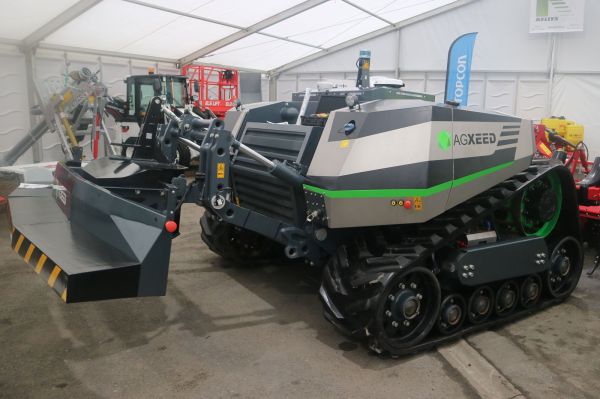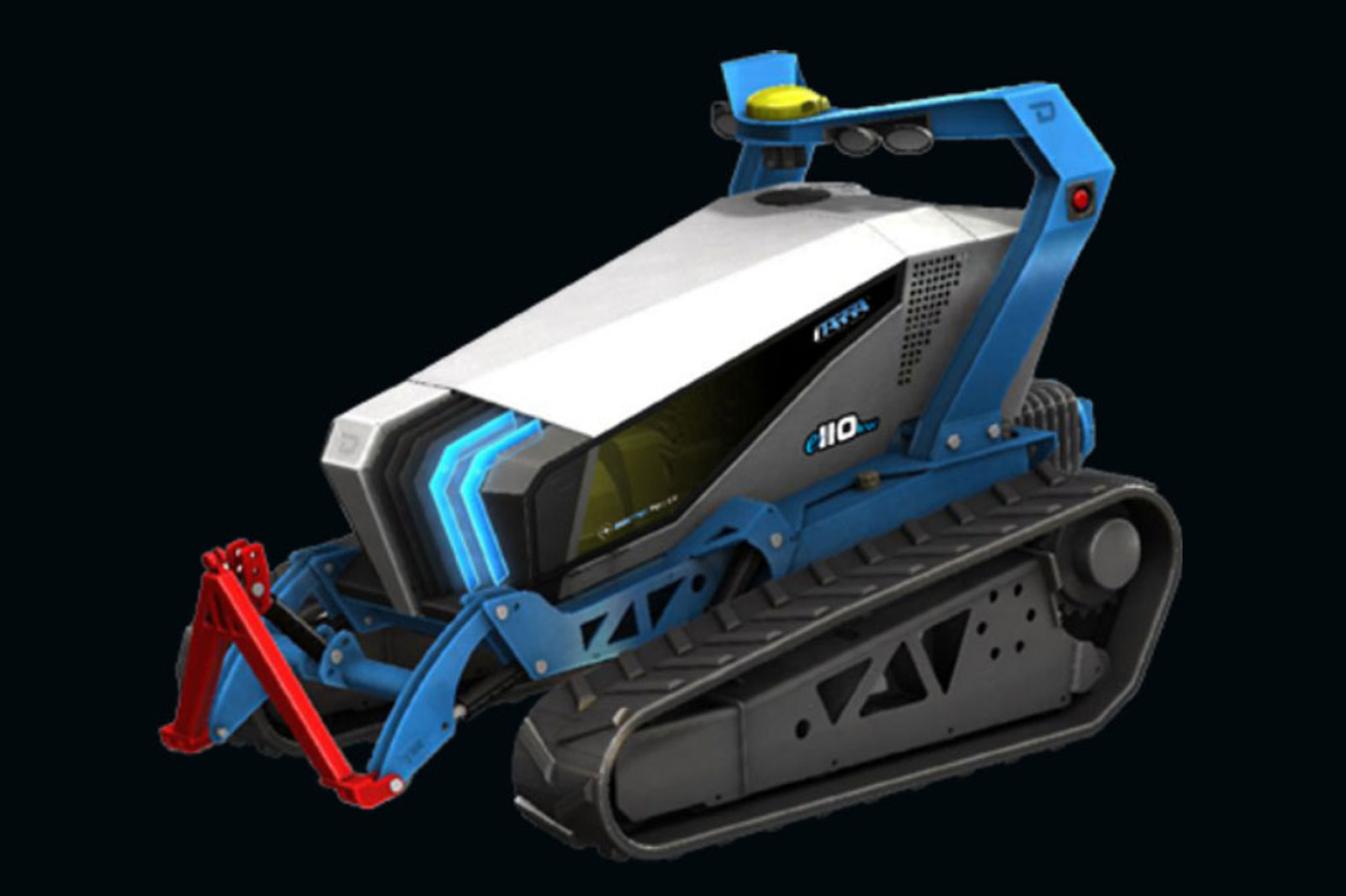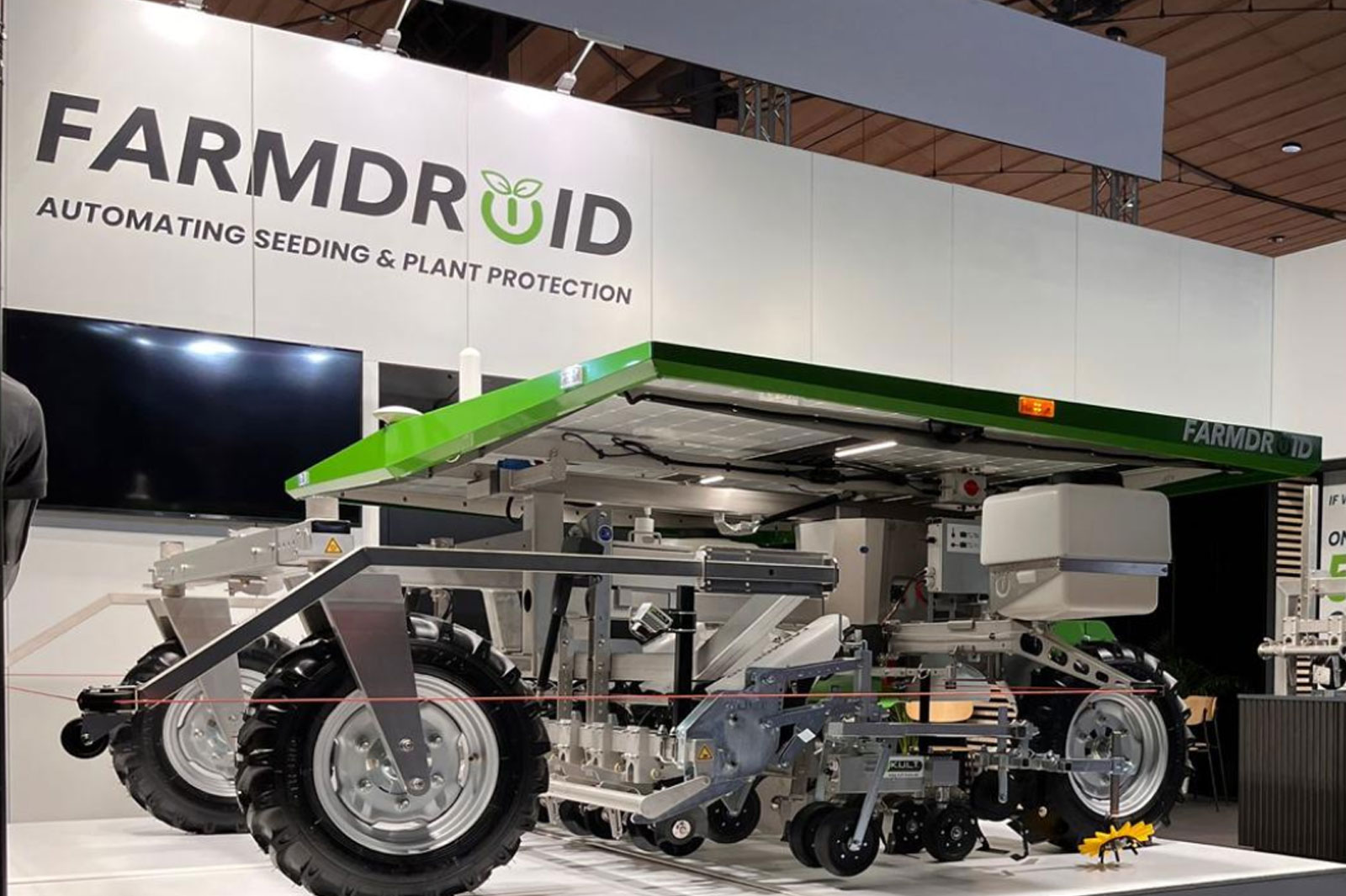Farming from the office?

Earlier this year, Kellys of Borris hosted several open days to celebrate 30 years of being Claas dealers. While there, I had the opportunity to see the latest autonomous arrival to the Irish tractor market from Dutch manufacturers, AgXeed, in which Claas has a minority shareholding since 2021.
The AgBot
Stood in a tent at one of the open days was the tracked AgXeed AgBot 5.115T2. This is powered by a 4.1L Deutz diesel engine producing 156hp, which is used to power an electric drivetrain with a speed range of 0 to 13.5km/h. This would cover nearly every field operation in Ireland. One advantage of the AgBot is that it can be specified in differing track widths and has a standard three-point linkage system, which allows for the use of equipment that is already on farm. Hydraulic power is delivered to the machine via four double-acting spools and it can lift up to 8 tonnes (t) on the rear and 3t on the front linkage. The unit weighs in at 7.8t unladen. AgXeed claims that the AgBot is capable of working for 20 hours at 75 per cent before needing to refill its 350L fuel and 30L AdBlue tanks.
The autonomy bit
That’s all the oily bits but the brain of the operation is the autonomy. The AgBot is covered in sensors both for accuracy and safety. There are four different sensor types on it: LiDAR (light detection and ranging); radar; ultrasonic; and contact. These allow the machine to work without someone directly in control. Some of the sensor types may be affected by climatic or working conditions and it can only work autonomously with three of the four systems in perfect working order. If the AgBot meets/sees an obstacle, it will stop and message the operator/owner. A selection of cameras onboard can be used to view the issue and decide whether manual intervention is required.

The iTarra’s virtual reality mode allows you to carry out tasks remotely. Photo: itarra.com
GPS
Novtel supplies the GPS guidance with the AgBot. It gives accuracy of +/- 2.5cm and the ability to transfer data in both directions. Once within its geofenced area, the AgBot is fully autonomous, and it can be set up to work with many different implements. Once fields are mapped and each implement programmed into the system, the operator just needs to pick the field on the online system and send the machine on its way.
The smaller operation
From an Irish point of view, Acres Machinery, based in Co. Roscommon, is producing the iTarra autonomous tractor, which is considered to be a solution for the smaller operation. It can be purchased at a price that is similar to standard tractors, or the technology can be added to an existing tractor for a fraction of the cost.
The iTarra has some very nice features including the ability to be operated via a virtual reality headset from a remote location. This feature gives the iTarra cross-industry adaptability that is not available with other machines. The other standout feature is the ability to autonomously attach to implements using a very smart magnetic pin system.
High precision
At the other end of the spectrum is the ingenious FarmDroid, which sows and undertakes weed control completely autonomously. The levels of precision required are very high with an RTK (real time kinematic) base station within 10km being essential. The reason for this is that the FarmDroid knows exactly where it has planted the seeds and, therefore, it knows where to weed without damaging the crop. Obviously, this machine will be used for high-value crops such as vegetable or sugar beet. The FarmDroid is completely electrically powered with a set of solar panels installed so it can work 24/7 with little or no intervention. Forward-working speeds are slow in comparison to tractor work but the precision and ability to work constantly makes this machine an option on some enterprises. As the FarmDroid is small and light, it greatly reduces compaction in the field and the fact that it is completely CO2 neutral means that not only is it helping the earth locally, it is also contributing to the bigger picture of reducing CO2 from agriculture.

The FarmDroid machine on display at Agritechnica. Photo: farmdroid.com.
Future farming
Many of the big-brand tractor manufacturers are heavily involved with autonomous technology, with CNH having projects in the red and the blue camps, and AGCO undertaking similar with Fendt, Massey and Valtra brands to different levels. It is safe to assume that for large-scale food production across the world, autonomous tractors will, over the next decade, become very common. In the large grain-growing areas of eastern Europe, the Americas and Australia, large tractors may well roam freely without direct human interaction, but I suspect these will be ‘standard tractors’ for the foreseeable future to allow operators to monitor and/or set up the equipment before setting if off to work.
On the local front, we are probably a bit further away due to the scale difference and the fact that tractors used in Ireland must often function like a Swiss army knife with their many different roles from field work to yard work and everything in between. Obviously, some of the more specialist growers of vegetables or beet in Ireland may have use for one of the machines mentioned in this piece as a labour-saving and output-improving measure, but on the average Irish farm they don’t fit the bill just yet. So farming from the farm office isn’t a reality for the majority right now but for a small few it may be on the horizon.




